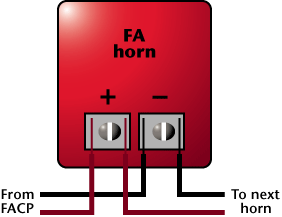Fire Detection Systems
Fire alarm systems protect both property and lives. Because of this, their installation is governed by strict codes and standards. You should make sure that you and your employees are familiar with the ins and outs of all applicable codes and standards to ensure that your system will function as intended. To see if you possess the requisite fire detection and notification know-how, take the following quiz.1. A cellular telephone connection may be used, in addition to a standard POTS line, for a fire alarm DACT.
a. True
b. False
2. In a public mode system, the audible notification appliances shall have a sound level at least how many dB above the average ambient sound level?
a. 5
b. 10
c. 15
d. Any of the above
3. How frequently should a fire alarm DACT send a test signal to the DACR?
a. Every 12 hours
b. Every 24 hours
c. Once a week
d. Once a month
4. One spare DACR is permitted to serve as a backup for a maximum of how many active DACRs?
a. 1
b. 2
c. 5
d. 10
5. “T†tapping of non-addressable initiating devices is not permitted.
a. True
b. False
6. Manual fire alarm pull sta- tions shall be located how many feet from a doorway?
a. 5
b. 10
c. 15
d. 20
e. Any of the above
7. Vane-type water flow detectors are commonly used on dry sprinkler systems.
a. True
b. False
8. All approved manual fire alarm pull stations are single-action.
a. True
b. False
9. A sprinkler system valve that is below ground level with an actuator and indicator located above ground is called a:
a. butterfly valve.
b. OS&Y.
c. PIV.
d. None of the above
10. In combination systems, fire alarm signals shall take precedence over any other signals.
a. True
b. False
11. The number of supervisory devices permitted to be connected to a single initiating device circuit shall not exceed how many devices?
a. 5
b. 10
c. 15
d. 20
e. Any of the above
12. Automatic fire pumps shall be supervised in accordance with NFPA 20.
a. True
b. False
13. NFPA 72 is the National Fire Alarm Code.
a. True
b. False
14. NFPA 70 is the Life Safety Code.
a. True
False

What’s Wrong with This?
Wally `Larman installed a fire alarm system for a commercial customer that included complete smoke detection and audible and visual notification devices. After approval from the local AHJ, Wally pre-wired the system using the correct cable and spliced “pigtails†for each notification device, as shown in this diagram, to facilitate the final device installation. After the installation, Wally tested the system and all devices functioned as designed, but when the AHJ performed an inspection, he was not happy. Can you see what Wally did wrong and what he must do to correct the problem?5-Minute Tech Quiz Answers
Here are the answers to What’s Wrong with This? and the 5-Minute Tech Quiz that appears on Page 35.1. a – You also can use a second POTS line or an approved radio to satisfy the requirements of a second telephone line. In addition, other communication techniques do not require two telephone lines.
2. c – NFPA 72 7.4.2.1 requires a sound level at least 15 dB above the average ambient sound level or 5 dB above the maximum sound level, whichever is greater.
3. b
4. c
5. b – In order to maintain full supervision, “T†tapping is not allowed for non-addressable devices. It may be permitted for addressable systems. You should check with the manufacturer to be sure if it is allowable.
6. a
7. b – Vane-type water-flow detectors are commonly used in wet sprinkler systems.
8. b
9. c
10. a
11. d – NFPA 72 6.8.5.7.2 states, “The number of supervisory devices permitted to be connected to a single initiating device circuit shall not exceed 20.â€
12. a
13. a
b – NFPA 101 is the Life Safety Code; NFPA 70 is the National Electric Code.

Answer to: What’s Wrong with This?
The problem is caused by the way Wally used the pigtails to connect the fire alarm horn devices. Using pigtails prevents supervision of the device, because a wire can become disconnected or a device can be removed without the system detecting trouble. Wally should install the horns and all notification devices as shown in this diagram so that full supervision is achieved. It is very important when installing fire alarm systems that you not only select the appropriate devices and wire, but you must also carefully follow the correct wiring techniques to ensure proper system operation and complete supervision.The problem is caused by the way Wally used the pigtails to connect the fire alarm horn devices. Using pigtails prevents supervision of the device, because a wire can become disconnected or a device can be removed without the system detecting trouble. Wally should install the horns and all notification devices as shown in this diagram so that full supervision is achieved. It is very important when installing fire alarm systems that you not only select the appropriate devices and wire, but you must also carefully follow the correct wiring techniques to ensure proper system operation and complete supervision.devices and wire, but you must also carefully follow the correct wiring techniques to ensure proper system operation and complete supervision.

